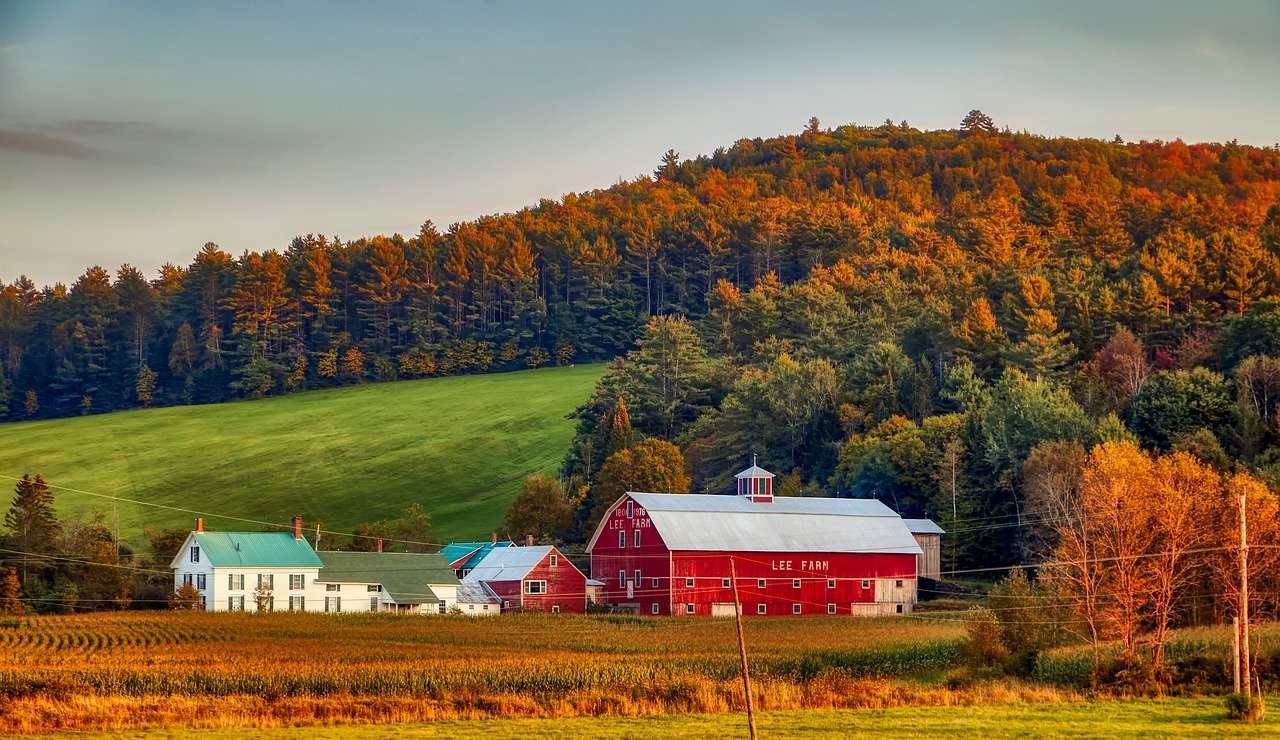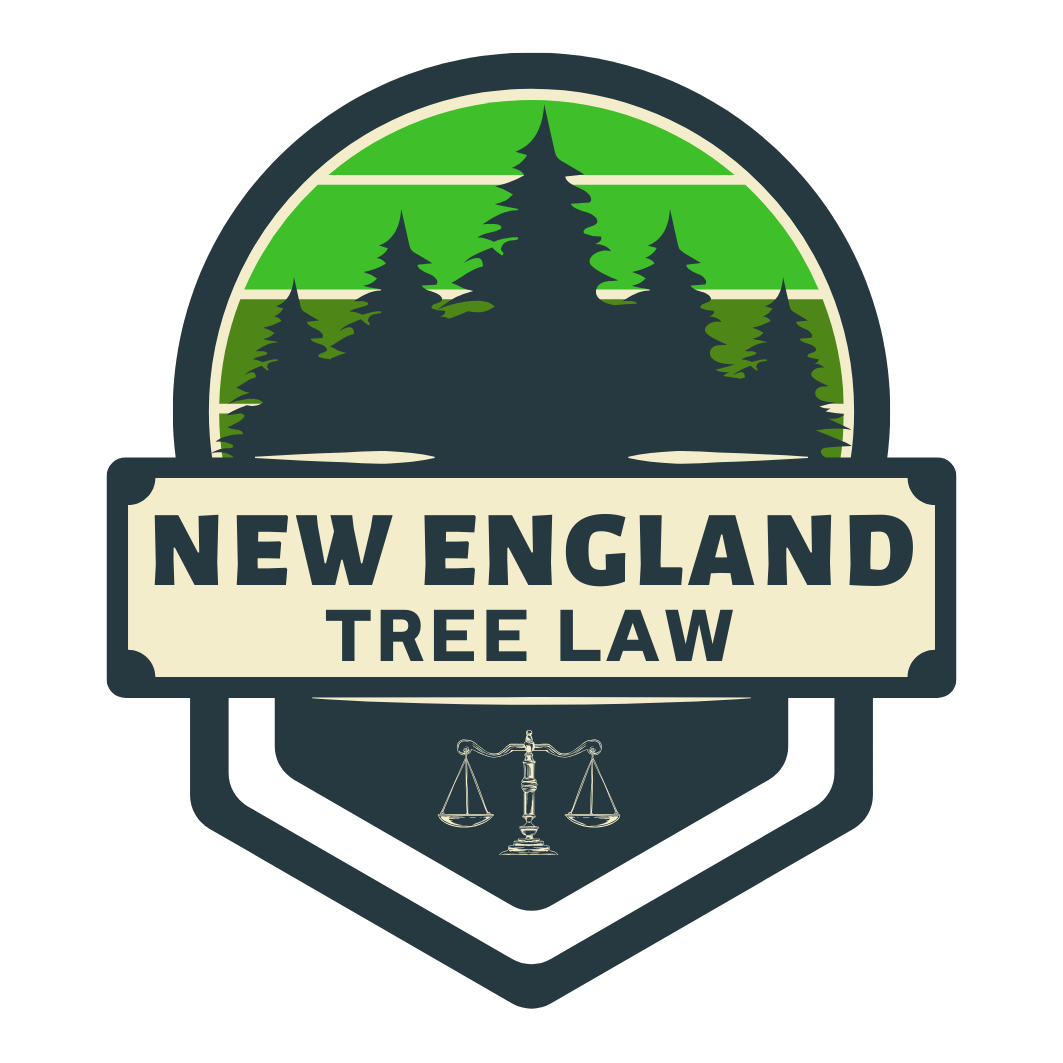
New Hampshire
Timber Trespass in New Hampshire
New Hampshire is the second most forested state in the country, with 81 percent of its land area covered by trees. The most common tree in the states include red maples, white pines, hemlocks, sugar maples, and of course the white birch, the New Hampshire state tree. Granite Staters prize the state’s scenic beauty and trees are an essential part of the state’s landscape.
Unfortunately, disputes about trees are also common in New Hampshire. A common example of such a dispute is when a neighbor cuts down trees that do not belong to them. This usually happens accidentally: for instance, a neighbor might be clearing their backyard of trees and mistakenly cross over the property line. Unfortunately, many property owners fail to perform a survey to establish their boundary line before proceeding with their tree-cutting activities.
Cutting someone else’s trees without permission is known as “timber trespass.” This article will explain how timber trespass lawsuits work in New Hampshire and how property owners can get compensation for their destroyed trees.
Timber trespass liability in New Hampshire
New Hampshire allows two concurrent remedies for timber trespass victims: statutory damages under RSA 227-J:8 and compensatory damages under state common law. This means that a property owner whose trees have been cut down may recover both statutory damages and compensatory damages. Peaslee v. Koenig, 122 N.H. 828, 831 (1982).
Statutory damages under RSA 227-J:8
RSA 227-J:8 is New Hampshire’s timber trespass statute. The statute provides that:
No person shall negligently cut, fell, destroy, injure, carry away, or cause to be cut, felled, destroyed, injured, or carried away, any tree, timber, log, wood, pole, underwood, or bark which is on the land of another person, or aid in such actions without the permission of that person or the person's agent.
The statute then sets out the damages that are available if the statute is violated. The act states:
In addition to any other civil or criminal penalty allowed by law, any person who violates the provisions in paragraph I shall forfeit to the person injured no less than 3 and not more than 10 times the market value of every such tree, timber, log, lumber, wood, pole, underwood, or bark cut, felled, destroyed, injured, or carried away.
Notably, the 3-10 times multiplier under the statute is mandatory. Therefore, damages under RSA 227-J:8 must be multiplied between 3 and 10 times even if a timber trespass is committed accidentally and without any malice.
The statute does not provide any guidance about how a factfinder should select which multiplier to use. It seems clear that the degree of culpability is relevant: for example, an accidental timber trespass would presumably lead to a lower multiplier, while a bad faith intentional act would be a high multiplier. See Berliner v. Clukay, 150 N.H. 80, 82-85 (2003). However, there are no strict rules and a jury or judge is left to their discretion in selecting the proper multiplier to apply. Id.
RSA 227-J:8, unfortunately, is often not a complete solution for injured landowners. That is because the purpose of the statute is “to protect trees as a marketable resource.” Motion Motors, Inc. v. Berwick, 150 N.H. 771, 774 (2004). Damages under the statute are thus limited to the “stumpage value” of the tree. RSA 227-G:2, XII-a.
Stumpage value of a tree, however, may not be an adequate measure of damages if the tree in question was not intended to be harvested for timber. This is true with most timber trespass cases that occur in a backyard or other residential setting. In those situations, the timber trespass statute is unlikely to “make whole” the victimized landowner.

Compensatory damages for timber trespass cases
Thankfully, RSA 227-J:8 is not the exclusive remedy for property owners who have their trees cut down without permission. The statute itself clarifies that it is a penalty “in addition to any other civil” remedy available. In Woodburn v. Chapman, 116 N.H. 503, 505 (1976), the New Hampshire Supreme Court held that “where a tree confers other benefits on the plaintiff” beyond just as a “marketable commodity,” the plaintiff “may join a count for compensatory damages with his count to recover the statutory penalty.” Indeed, as far back as the 19th century, New Hampshire courts recognized that trees may have significant value to their owners beyond simply “market” or “stumpage value”:
If [a neighbor] cuts down my shade-trees, my damages are not necessarily limited to their value for wood or timber. . . . The owner may sometimes be entitled to greater damages for the destruction or conversation of property than its market value: he may be entitled to damages for the consequential injury to other property, or to his feelings, for interruption of business, or loss of comfort and health.
Hutchinson v. Parker, 64 N.H. 89, 90 (1886); see also Barker v. Publishers’ Paper Co., 78 N.H. 571, 574 (1918) (“In trespass for cutting and carrying away shade trees, the owner is not limited to their value for lumber. He recovers what their aesthetic value was.”).
Compensatory damages for timber trespass can be calculated in multiple ways. One measure is diminution of property value caused by the destruction of the trees. However, oftentimes decrease in property value does not adequately capture the extent of harm caused by unauthorized cutting of shade or ornamental trees in residential contexts.
Thus, replacement or restoration cost is often the appropriate measure of damages in a case involving two neighbors and trees in a residential setting. See Morris v. Ciborowski, 113 N.H. 563, 566 (1973) (“Replacement cost is allowable as a measure of damages instead of the value of the land before and after the harm where, as here, there is substantial evidence of the owner's personal residential and recreational use of the land.”).
Restoration costs are appropriate because it is hard to otherwise quantify the value of trees that serve some personal purpose like privacy, shade, or beauty. The purpose of compensatory damages “is to put the injured party as nearly as possible in the same position he would have been had the injury not occurred.” Phillips v. Verax Corp., 138 N.H. 240, 248 (1994). Replacing a felled tree with one of the exact same type and dimensions, that provides the same aesthetic, shade, and privacy benefits, is the only way to really make the tree owner whole.
For smaller trees, determining replacement cost is a relatively simple exercise. Tree nurseries and landscaping centers sell and install trees at various stages of growth and it may be possible to get an exact estimate of how much it would cost to buy and install a similar-sized tree of the same species. This cost would be the measure of damages for smaller re-plantable trees.
Assessing the value of larger trees is a more difficult endeavor. It is typically not feasible to plant a larger tree that may be 50 feet or more in height. Therefore, when determining the replacement cost of a large tree, arboreal appraisal methods must be employed.
The International Society of Arboriculture publishes a book called the “Guide for Plant Appraisal” that is the industry standard for tree value appraisal. The guide contains several different methods for determining what a tree is worth. For large trees, arborists use a system called the “Trunk Formula Method.” In short, the Trunk Formula Method allows arborists to calculate the replacement value of a large tree by determining the per-square-inch cost of a smaller available replacement tree. For example, if a 10-foot-high pine tree is available at a nursery for replanting, an arborist will calculate the per-square-inch cost of that 10-foot pine and then extrapolate that cost to the tree of the same species being appraised (for example, a 50-foot pine that was cut down by a neighbor). Arborists then modify the “basic tree cost” of the hypothetical replacement tree by making adjustments which account for the condition and location of the appraised tree.
The replacement value of a large tree can be significant. Appraised values of trees with large stump diameters can be worth tens of thousands of dollars. An experienced tree law attorney should be able to give a rough approximation of a tree value. It is important to remember, however, that a jury has enormous discretion in determining how much money to award an injured landowner, even if it is clear their trees were wrongfully cut. The jury is not required to accept an arborist’s appraisal at face value, and timber trespass verdicts can vary greatly based on a number of factors.
Insurance coverage for timber trespass
The good news for victims of timber trespass is that there is often insurance coverage available to compensate them for their loss. When a neighbor is responsible for cutting down their neighbor’s trees, a claim can be made with the perpetrator’s homeowner’s insurance. This is because homeowner’s insurance policies include “personal liability” coverage. Liability insurance indemnifies homeowners when they are legally liable for damages due to their own negligent conduct. Thus, if a homeowner accidentally misjudges the property line and cuts down their neighbor’s trees, their homeowner’s insurance should be responsible for covering liability that results.
Insurance companies are sometimes unfamiliar with timber trespass claims. At first glance, there may be questions about whether a timber trespass is an “accident” to which liability insurance applies. Trespass, after all, is an “intentional tort” under the law, and liability insurance covers only “accidents” (also termed “occurrences” in insurance parlance).
Courts in New Hampshire, however, have eschewed the technical legal categorizations of causes of action in adjudging whether an incident is a covered occurrence. Rather, the question is whether the insured intended to inflict injury. Lumber Ins. Companies, Inc. v. Allen, 820 F. Supp. 33, 35 (D.N.H. 1993). Thus, “if an insured sets out to clear his property of trees and he inadvertently strays across the unmarked property line and cuts down a neighbor’s tree, his conduct would be accidental . . . because he had no intention to injure.” Id.
Therefore, if a neighbor who perpetrated a tree-cutting has homeowner’s insurance, an injured landowner may be able to make an insurance claim for compensation. The presence of insurance coverage means that property owners may be able to receive compensation through an insurance settlement without having to file a lawsuit. Insurance settlements benefit both the claimant and the insurance company by compromising in order to remove the uncertainty of litigation.
Conclusion
Timber trespass is a common occurrence in New Hampshire. Sometimes it involves intentional theft of timber for profit. More often, however, timber trespass lawsuits involves a dispute between neighbors. The neighbor’s negligence may result in the loss of trees prized for their privacy and aesthetic benefits.
Trees can have considerable value, especially in residential settings. If your trees were cut down because of a timber trespass, you may be able to receive compensation through a settlement or lawsuit. An experienced timber trespass attorney can help pursue a timber trespass claim on your behalf.
To speak with an experienced timber trespass attorney, use the form below.

